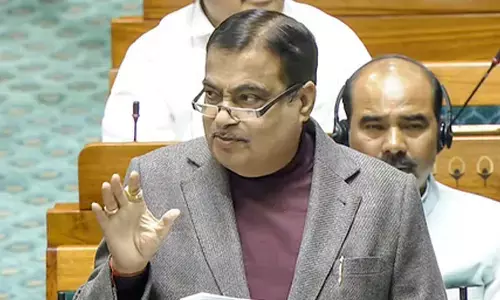RBI releases Internal Working Group report on Extant Ownership Guidelines & Corporate Structure for Private Sector Banks

Reserve Bank of India
Reserve Bank of India (RBI) has released a report on Extant Ownership Guidelines for Indian private sector banks, which was prepared by Internal Working Group (IWG) appointed by the central bank.
Reserve Bank of India (RBI) has released a report on Extant Ownership Guidelines for Indian private sector banks, which was prepared by Internal Working Group (IWG) appointed by the central bank.
The Reserve Bank of India had constituted an Internal Working Group (IWG) on June 12, 2020, to review extant ownership guidelines and corporate structure for Indian private sector banks.
The key recommendations of the IWG are as follows:
1) The cap on promoters' stake in the long run (15 years) may be raised from the current level of 15 per cent to 26 per cent of the paid-up voting equity share capital of the bank.
2) As regards non-promoter shareholding, a uniform cap of 15 per cent of the paid-up voting equity share capital of the bank may be prescribed for all types of shareholders.
3) Large corporate/industrial houses may be allowed as promoters of banks only after necessary amendments to the Banking Regulation Act, 1949 (to prevent connected lending and exposures between the banks and other financial and non-financial group entities); and strengthening of the supervisory mechanism for large conglomerates, including consolidated supervision.
4) Well run large Non-banking Finance Companies (NBFCs), with an asset size of Rs 50,000 crore and above, including those which are owned by a corporate house, may be considered for conversion into banks subject to completion of 10 years of operations and meeting due diligence criteria and compliance with additional conditions specified in this regard.
5) For Payments Banks intending to convert to a Small Finance Bank, a track record of 3 years of experience as Payments Bank may be considered as sufficient.
6) Small Finance Banks and Payments Banks may be listed within '6 years from the date of reaching net worth equivalent to prevalent entry capital requirement prescribed for universal banks' or '10 years from the date of commencement of operations', whichever is earlier.
7) The minimum initial capital requirement for licensing new banks should be enhanced from Rs 500 crore to Rs 1000 crore for universal banks and from Rs 200 crore to Rs 300 crore for small finance banks.
8) Non-operative Financial Holding Company (NOFHC) should continue to be the preferred structure for all new licenses to be issued for universal banks. However, it should be mandatory only in cases where the individual promoters / promoting entities/ converting entities have other group entities.
9) While banks licensed before 2013 may move to a NOFHC structure at their discretion, once the NOFHC structure attains a tax-neutral status, all banks licensed before 2013 shall move to the NOFHC structure within 5 years from the announcement of tax-neutrality.
10) Till the NOFHC structure is made feasible and operational, the concerns with regard to banks undertaking different activities through subsidiaries/ Joint Ventures/ associates need to be addressed through suitable regulations.
11) Banks currently under NOFHC structure may be allowed to exit from such a structure if they do not have other group entities in their fold.
Reserve Bank may take steps to ensure harmonisation and uniformity in different licensing guidelines, to the extent possible. Whenever new licensing guidelines are issued, if new rules are more relaxed, the benefit should be given to existing banks, and if new rules are tougher, legacy banks should also conform to new tighter regulations, but a non-disruptive transition path may be provided to affected banks.


















